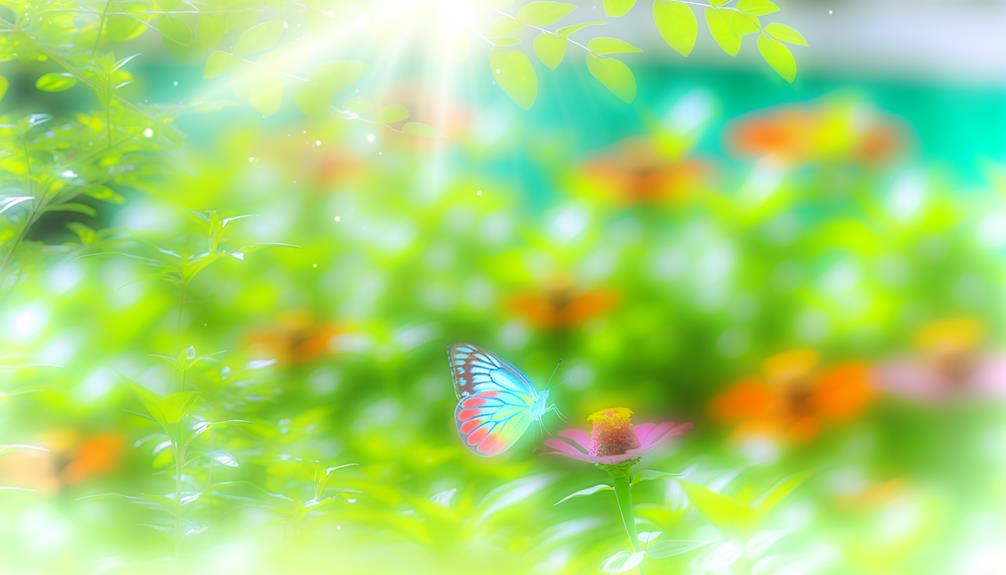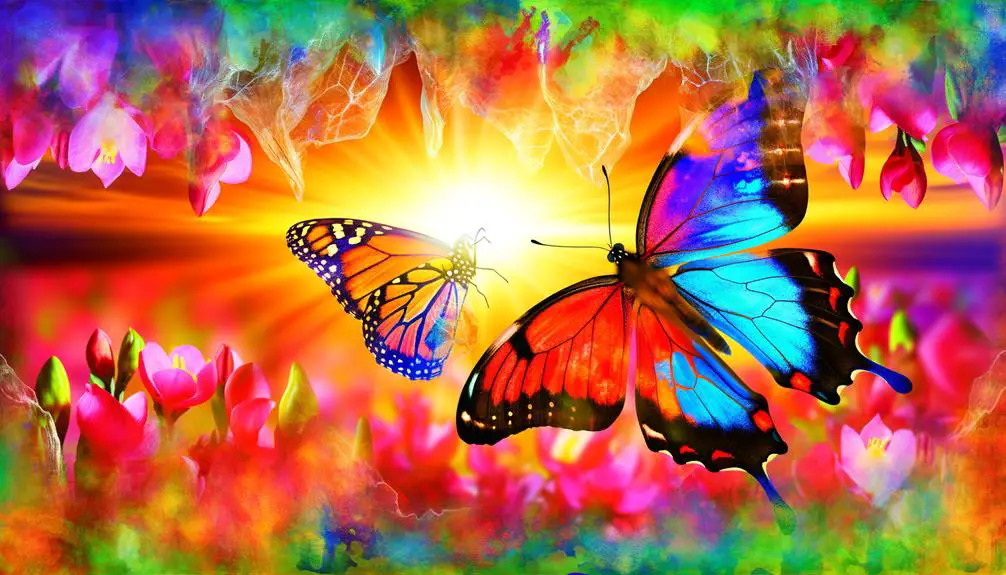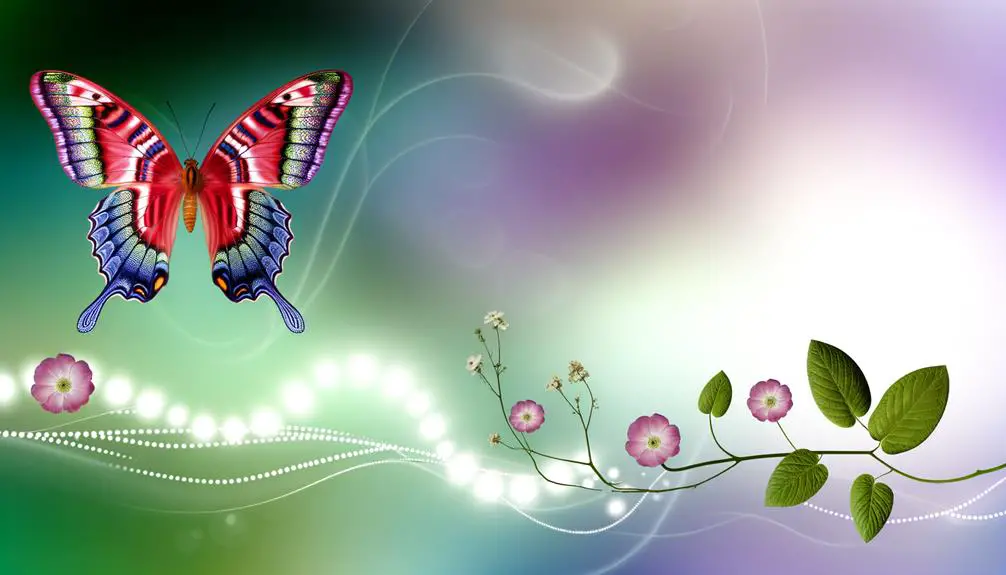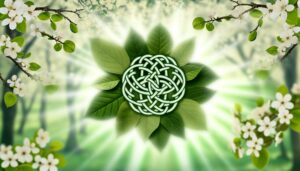Decoding the Butterfly Symbol: Understanding Its Meaning
The butterfly symbol embodies profound transformation, spiritual rebirth, and the transient nature of life. Its metamorphosis from caterpillar to butterfly serves as a powerful analogy for personal growth and the cyclical patterns of existence.
Culturally, it signifies the soul, joy, and womanhood, resonating through Greek, Japanese, and Native American traditions. Spiritually, butterflies represent the potential for profound change, mirroring phases of human development and the soul's immortality.
Artistic representations depict butterflies as emblems of resurrection and beauty. Individuals often share poignant personal encounters with butterflies, viewing them as symbols of change and messages from loved ones.
Explore further to uncover the rich layers of its symbolism.

Key Takeaways
- Butterflies symbolize transformation and rebirth, reflecting the profound metamorphosis from caterpillar to adult butterfly.
- They represent spiritual ascension and personal growth, mirroring stages of human spiritual development.
- Across cultures, butterflies are symbols of change, joy, and the transient nature of life.
- In art, butterflies often depict themes of resurrection, longevity, and life's ephemeral beauty.
- Personal encounters with butterflies are seen as comforting signs from deceased loved ones or metaphors for personal journeys.
Transformation and Rebirth

The butterfly symbol is universally regarded as a potent representation of transformation and rebirth, embodying the profound metamorphosis from a caterpillar into a magnificent winged creature.
This metamorphosis serves as a compelling analogy for personal growth and the cyclical nature of life. Biologically, the shift from larva to pupa and finally to an adult butterfly encapsulates a dramatic and intricate process of change, one that resonates with human experiences of development and renewal.
In psychological terms, it signifies the potential for profound change, often following periods of introspection or struggle. This potent imagery underscores the idea that, despite initial constraints, there exists the possibility for emerging into a new state of existence, symbolizing hope, resilience, and the inherent potential for renewal.
Cultural Symbolism
Across diverse cultures and historical epochs, the butterfly has been venerated as a symbol imbued with profound meanings, reflecting themes of transformation, spiritual ascension, and the transient nature of life. In Ancient Greece, butterflies were seen as the embodiment of the soul and psyche. In Japanese culture, they represent marital bliss and womanhood. Conversely, in Native American traditions, butterflies symbolize change and joy.
| Culture | Symbolism | Example |
|---|---|---|
| Ancient Greece | Soul and psyche | Butterfly as soul's journey |
| Japan | Marital bliss and womanhood | Butterflies in weddings |
| Native America | Change and joy | Butterfly dances |
These cultural interpretations underscore the butterfly's universal resonance as a potent emblem of life's ephemeral beauty.
Spiritual Significance

In spiritual contexts, the butterfly is often revered as an emblem of transformation and personal growth, symbolizing the soul's journey towards enlightenment.
This metamorphosis from a caterpillar to a butterfly is seen as a powerful metaphor for spiritual awakening and rebirth. Many spiritual traditions regard the butterfly as a sign of the soul's immortality and its capacity for continuous evolution.
The stages of a butterfly's life—egg, larva, pupa, and adult—mirror the phases of human spiritual development, emphasizing the importance of inner change and perseverance.
In this light, encountering a butterfly may be interpreted as a divine reminder to embrace personal change and seek higher consciousness, embodying the potential for profound spiritual growth and renewal.
Artistic Representations
Building upon its spiritual significance, the butterfly's transformative symbolism has profoundly influenced artistic representations across various cultures and historical periods.
In ancient Greece, butterflies appeared in pottery and frescoes, representing the soul and its journey.
Renaissance art embraced the butterfly to symbolize resurrection and human transformation, with notable works by artists like Albrecht Dürer.
In East Asian art, butterflies often depicted marital bliss and longevity, as seen in traditional Chinese paintings and Japanese woodblock prints.
Modern and contemporary artists continue to explore the butterfly's motifs, utilizing its vivid imagery to evoke themes of change, beauty, and ephemerality.
The butterfly's visual presence in art underscores its universal resonance, bridging cultural divides and historical epochs through its enduring emblematic power.
Personal Narratives

Many individuals recount profound personal experiences where the sight of a butterfly served as a poignant symbol of transformation, resilience, or a connection with loved ones who have passed away. These narratives often highlight moments of introspection and emotional growth, where the butterfly appears at a critical juncture in one's life.
For instance, some describe encountering a butterfly during a period of mourning, interpreting it as a comforting sign from a deceased relative. Others perceive the butterfly's metamorphosis from caterpillar to winged creature as a metaphor for their own personal journeys of overcoming adversity.
Such personal narratives not only underscore the butterfly's symbolic significance but also contribute to its enduring presence in cultural and psychological contexts.
Conclusion
In the grand tapestry of human understanding, the butterfly symbol weaves a profound narrative of transformation and rebirth, akin to the metamorphosis from caterpillar to winged marvel.
Across diverse cultures, it embodies nuanced meanings, while in spiritual domains, it soars as a harbinger of transcendence.
Artistically, it flutters through myriad interpretations, and within personal sagas, it often heralds significant life changes.
Consequently, the butterfly remains an enduring allegory for the cycles of existence and the perpetual journey of the soul.






